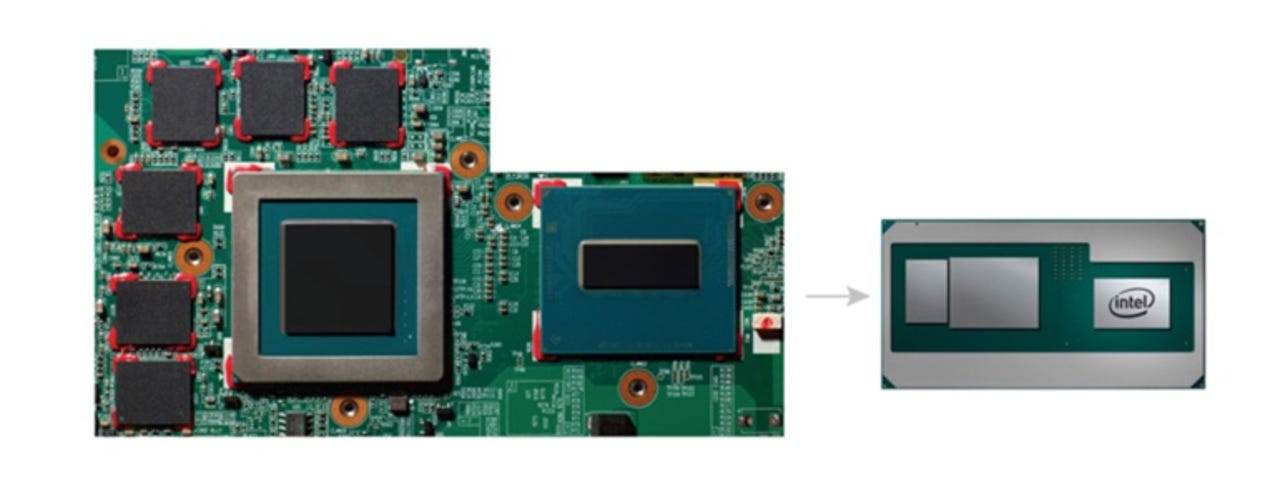Intel turns to AMD for semi-custom GPU for next-gen mobile chips


Intel's 8th-generation Core H mobile processors
Intel is working with AMD to produce a next-generation notebook chip with the performance to keep graphics rival Nvidia at bay.
Featured
Must read: Everything you need to know about charging your iPhone X or iPhone 8
The new chips will be part of Intel's 8th-generation Core H mobile processors, and will not only feature a discrete-level graphics cards, but also have built-in High Bandwidth Memory (HBM2) RAM packed onto a single board.
To accomplish this the chip will feature Intel's Embedded Multi-Die Interconnect Bridge (EMIB) intelligent bridge technology linked to a custom-to-Intel third-party discrete AMD Radeon graphics chip.
The idea behind the collaboration is to give the CPU/GPU bundle the power required to run games and content creation applications without having to have a separate GPU in the notebook. This not only saves on space -- which is critical in devices that are getting smaller and thinner -- by allowing manufacturers to do away with separate heatsinks, but is also reduces overall cost.
"Our collaboration with Intel expands the installed base for AMD Radeon GPUs and brings to market a differentiated solution for high-performance graphics," said Scott Herkelman, vice president and general manager, AMD Radeon Technologies Group. "Together we are offering gamers and content creators the opportunity to have a thinner-and-lighter PC capable of delivering discrete performance-tier graphics experiences in AAA games and content creation applications. This new semi-custom GPU puts the performance and capabilities of Radeon graphics into the hands of an expanded set of enthusiasts who want the best visual experience possible."
Why is AMD collaborating with a competitor? According to a statement send to ZDNet, "this semi-custom win is an opportunity for AMD to expand the reach of AMD Radeon technology through a multi-chip module implementation, and further validates that our leadership GPUs and semi-custom design capabilities are unmatched."
However, it's likely that a big driver for two companies working together again for the first time since the 1980s is pressure from Nvidia. While Intel has been in the discrete graphics business for years, it's never been able to fend off Nvidia in the way that AMD has with its Radeon GPUs. This has meant that high-end Intel notebooks have needed to have separate GPUs, which adds to the cost and creates additional hassle for hardware makers, and pushes the device out of the thin-and-light portability category.
Which is what Intel is hoping to change with this partnership.
According to AMD this is not a licensing deal and there has been no transfer or license of IP to Intel.
Build a high-performance AMD Threadripper PC
See also:
- The iPhone X doesn't save Apple from desperately needing a 'next big thing'
- Can you blow up your iPhone x/8 by placing it on a wireless charger pad while it's charging with a cable?
- The Apple Watch 3 is awesome
- USB-C is a total dumpster fire because we want it to do too much too quickly
- The iPhone 8's best feature is one that most people will never get to use
- iOS 11.0.1 update causes havoc for some iPhone and iPad users